 W
WThis is a list of public art in Chicago, in the United States. This list applies only to works of public art on permanent display in an outdoor public space. For example, this does not include artworks in museums.
 W
WThe following list includes notable athletes who were born or raised in Chicago, Illinois.
 W
WThis is a list of venues used for professional baseball in Chicago. The information is a synthesis of the information contained in the references listed.Dexter Park Occupant: Chicago White Stockings, independent professional club (1870) Location: Halsted Street (east), between 47th Street (south) and the imaginary line of 42nd Street (north). Adjacent to Union Stock Yards. Later: site of International Amphitheatre Currently: Uniform services plantOgden Park Occupant: Chicago White Stockings (1870) – some games Location: East of where Ontario Street T-ed into Michigan Avenue. Currently: hotels and other businessesUnion Base-Ball Grounds a.k.a. White-Stocking Park Occupant: Chicago White Stockings – National Association (1871) Location: Randolph (north), Michigan Avenue (west) Currently: Northwest corner of Lake Park – diamond roughly in southwest corner of field23rd Street Grounds Occupants: Neutral site for some out-of-town clubs' games (1872–1873) Chicago White Stockings – NA (1874–1875), National League (1876–1877) Fairbanks - League Alliance (1877) Location: 23rd Street, State Street, 22nd Street and what is now Federal Street Currently: National Teachers AcademyLake Park a.k.a. Lake-Shore Park a.k.a. White-Stocking Park Occupant: Chicago White Stockings – NL (1878–1884) Location: Same as 1871 site – diamond roughly in south part of fieldSouth Side Park (I) a.k.a. 39th Street Grounds (I) Occupant: Chicago – Union Association (1884) Location: "on the corner of 39th Street [now Pershing Road] and South Wabash Avenue" – a few blocks east and southeast of the later south side ballparksWest Side Park (I) Occupants: Chicago White Stockings – NL (1885–1891) Chicago Maroons - Western Association (1888) Also used as a neutral site for one game in the 1887 World Series Location: Congress Street ; Loomis Street ; Harrison Street ; Throop Street Currently: Andrew Jackson Language Academy South Side Park (II) Occupants: Chicago Pirates – PL (1890) Chicago White Stockings – NL Notes: Split schedule with West Side Park (I) in 1891 and West Side Park (II) in 1893 Location: 35th Street ; South Wentworth Avenue ; 33rd Street ; railroad tracks - same footprint later occupied by Comiskey Park and Armour Square Park Currently: Parking lot and/or Dan Ryan ExpresswayWest Side Park (II) a.k.a. West Side Grounds Occupant: Chicago White Stockings – NL (mid-1893–1915) Location: Polk Street ; Lincoln Street ; Wood Street ; flats and Taylor Street Currently: University of Illinois College of MedicineSouth Side Park (III) a.k.a. 39th Street Grounds (II) renamed Schorling's Park Occupants: Chicago White Sox – American League ; Chicago American Giants – Negro Leagues (1911–1940) Location: 39th Street ; South Wentworth Avenue ; South Princeton Avenue ; line of 38th Street – a few blocks south of the Comiskey Park sites Currently: Wentworth Gardens housing projectComiskey Park a.k.a. White Sox Park (1960s-1970s) Occupants: Chicago White Sox – AL ; Chicago American Giants – Negro Leagues (1941-ca.1950) Location: 324 West 35th Street – 35th Street ; Shields Street (west); 34th Street ; Wentworth Avenue and Dan Ryan Expressway Currently: Parking lotWrigley Field originally Weeghman Park, then Cubs Park Occupants: Chicago Chi-Feds/Whales – Federal League (1914–1915); Chicago Cubs – NL (1916–present) Location: 1060 West Addison Street ; Clark Street ; Waveland Avenue ; Sheffield Avenue Guaranteed Rate Field originally "New Comiskey Park", then U.S. Cellular Field Occupant: Chicago White Sox – AL (1991–present) Location: 333 West 35th Street, across the street to the south from "Old" Comiskey Park – 35th Street ; site of Shields Street ; Wentworth Avenue and Dan Ryan Expressway ; parking and Wells Street
 W
WThe beaches in Chicago are an extensive network of waterfront recreational areas operated by the Chicago Park District. The Chicago metropolitan waterfront includes parts of the Lake Michigan shores as well as parts of the banks of the Chicago, Des Plaines, Calumet, Fox, and DuPage Rivers and their tributaries. The waterfront also includes the Illinois and Michigan Canal and the Sanitary and Ship Canal. Historically, the waterfront has been used for commerce, industry, and leisure. Leisure, such as fishing, swimming, hunting, walking and boating, was much more prevalent throughout the river sections of the waterfront system early in the 19th century before industrial uses altered the landscape. By midcentury, much leisure shifted to Lake Michigan as a result of industrial influence. The first City of Chicago Public Beach opened in Lincoln Park in 1895. Today, the entire 28 miles (45 km) Chicago lakefront shoreline is man-made, and primarily used as parkland. There are 24 beaches in Chicago along the shores of freshwater Lake Michigan.
 W
WThe Episcopal Diocese of Chicago is the official organization of the Episcopal Church in Chicago and Northern Illinois, US. The diocese is served by Jeffrey Lee, who serves as bishop of the diocese, and Christopher Epting, who served as assistant bishop in the diocese until his planned retirement in December 2015. The mother church of the diocese is St. James Cathedral, which is the oldest Episcopal congregation in the city of Chicago.
 W
WChicago blues is a form of blues music developed in Chicago, Illinois, in the 1950s, in which the basic instrumentation of Delta blues—acoustic guitar and harmonica—is augmented with electric guitar, amplified bass guitar, drums, piano, harmonica played with a microphone and an amplifier, and sometimes saxophone. The best-known Chicago blues musicians include singer-songwriters and bandleaders Muddy Waters, Howlin' Wolf, and Willie Dixon; guitar players such as Elmore James, Luther Allison, and Buddy Guy; and harp players such as Little Walter, Paul Butterfield, and Charlie Musselwhite. Since the 1960s, the Chicago blues style and sound has spread around the US, the UK and beyond.
 W
WThe following is a list of colleges and universities in the Chicago metropolitan area.
 W
WChicago is divided into 77 community areas for statistical and planning purposes. Census data and other statistics are tied to the areas, which serve as the basis for a variety of urban planning initiatives on both the local and regional levels. The areas' boundaries do not generally change, allowing comparisons of statistics across time. The areas are distinct from but related to the more numerous neighborhoods of Chicago; an area often corresponds to a neighborhood or encompasses several neighborhoods, but the areas do not always correspond to popular conceptions of the neighborhoods due to a number of factors including historical evolution and choices made by the creators of the areas. As of 2017, Lake View is the most populous of the areas with over 100,000 residents, while Burnside is the least populous with just over 2,000. Other geographical divisions of Chicago exist, such as the "sides" created by the branches of the Chicago River, the wards of the Chicago City Council, and the parishes of the Roman Catholic Church.
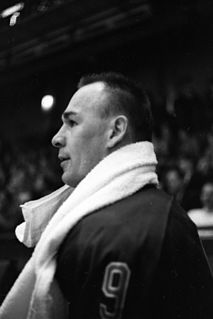 W
WThe Chicago Cougars were a professional ice hockey team based in Chicago, Illinois. They were members of the Western Division of the World Hockey Association (WHA). The club was founded in 1972 as one of the league's twelve original franchises. The Cougars played their home games in the International Amphitheatre. Fifty-seven players played at least one game for the club, either in the WHA regular season or the playoffs.
 W
WThis is a list of diplomatic missions and trade organizations in Chicago. Many governments and organizations have established diplomatic and trade representation in Chicago, Illinois.
 W
WSince its opening in 1994, the United Center in Chicago, Illinois, has hosted many local, regional and international artists, spanning a wide range of musical genres. A list of notable concerts are given in the table below, with other non-concert entertainment events also included. All events are arranged in a chronological order.
 W
WThis is a list of festivals in Chicago, Illinois, United States.
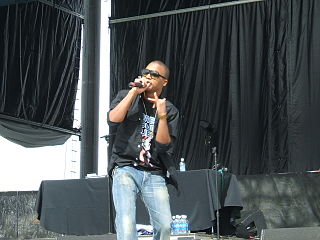 W
WThis is a comprehensive list of awards and nominations won by Lupe Fiasco, an American hip-hop artist.
 W
WSince the 1830s, when Chicago enjoyed a brief period of importance as a local milling center for spring wheat, the city has long been a center for the conversion of raw farm products into edible goods. Since the 1880s, Chicago has also been home to leading firms in other areas of the food processing industry, including cereals, baked goods, and candy.
 W
WThis page details statistics, records, and other achievements pertaining to Michael Jordan.
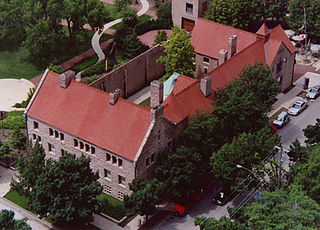 W
WChicago Landmark is a designation by the Mayor and the City Council of Chicago for historic sites in Chicago, Illinois, United States. Listed sites are selected after meeting a combination of criteria, including historical, economic, architectural, artistic, cultural, and social values. Once a site is designated as a landmark, it is subject to the Chicago Landmarks Ordinance, which requires that any alterations beyond routine maintenance, up to and including demolition, must have their permit reviewed by the Landmarks Commission. Many Chicago Landmarks are also listed on the National Register of Historic Places, providing federal tax support for preservation, and some are further designated National Historic Landmarks, providing additional federal oversight.
 W
WThe Chicago Marathon, one of the six World Marathon Majors, has been contested by men and women annually since 1977. Since 1983, it has been held annually in October. The United States had been represented by the most Chicago Marathon winners. After a seventh consecutive win by a Kenyan man in 2009, Kenyan men have won more times (ten) than men representing any other country. The United Kingdom is in third place in total victories (eight), victories by men (five) and victories by women (three). All four of Brazil's victors have been men, and all three of Portugal's winners have been women.
 W
WDowntown Chicago, Illinois has some double-decked and a few triple-decked streets immediately north and south of the Main Branch and immediately east of the South Branch of the Chicago River. The most famous and longest of these is Wacker Drive, which replaced the South Water Street Market upon its 1926 completion. The resulting bi-level street has an upper-level riverfront boulevard, a lower-level roadway for commercial and through traffic, and a recreational walkway at water level.
 W
WThe city of Chicago, Illinois has many cultural institutions and museums, large and small. Major cultural institutions include:the Art Institute of Chicago, Chicago Symphony Orchestra, Chicago Architecture Foundation, Lyric Opera of Chicago, Goodman Theater, Joffrey Ballet, Central Public Harold Washington Library, and the Chicago Cultural Center, all in the Loop; Lincoln Park's Lincoln Park Zoo, Lincoln Park Conservatory, Chicago History Museum, Chicago Academy of Sciences/Peggy Notebaert Nature Museum and Steppenwolf Theatre; the Field Museum, Shedd Aquarium, and Adler Planetarium in the Near South Side's Museum Campus; the Museum of Science and Industry, Oriental Institute, Smart Museum of Art, and DuSable Museum in Hyde Park; the Museum of Contemporary Art, The Second City comedy troupe, and the Chicago Shakespeare Theater in Near North Side; the Garfield Park Conservatory; and Pilsen's National Museum of Mexican Art; as well as the Brookfield Zoo, Chicago Botanic Gardens, and Morton Arboretum in nearby suburbs.
 W
WThere are sometimes said to be more than 200 neighborhoods in Chicago, though residents differ on their names and boundaries. A city ordinance prescribing and mapping 178 neighborhoods is almost unknown and ignored even by municipal departments. Neighborhood names and identities have evolved over time due to real estate development and changing demographics. The City of Chicago is also divided into 77 community areas which were drawn by University of Chicago researchers in the late 1920s. Chicago's community areas are well-defined, generally contain multiple neighborhoods, and are less commonly used by city residents. More historical images of Chicago neighborhoods can be found in Explore Chicago Collections, a digital repository made available by Chicago Collections archives, libraries and other cultural institutions in the city.
 W
WThis is a list of parks in Chicago. There are 570 parks in the city, covering 8.2% of its total land acreage.
 W
WParks in Chicago include open spaces and facilities, developed and managed by the Chicago Park District. The City of Chicago devotes 8.5% of its total land acreage to parkland, which ranked it 13th among high-density population cities in the United States in 2012. Since the 1830s, the official motto of Chicago has been Urbs in horto, Latin for "City in a garden" for its commitment to parkland. In addition to serving residents, a number of these parks also double as tourist destinations, most notably Lincoln Park, Chicago's largest park, visited by over 20 million people each year, is one of the most visited parks in the United States. Notable architects, artists and landscape architects have contributed to the 570 parks, including Daniel Burnham, Frederick Law Olmsted, Jens Jensen, Dwight Perkins, Frank Gehry, and Lorado Taft.
 W
WThe following list includes notable people who were born or have lived in Chicago, Illinois. For a similar list organized alphabetically by last name, see the category page People from Chicago, Illinois.
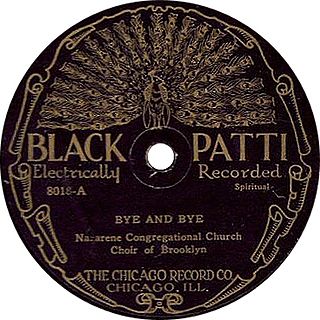 W
WThis is a list of notable record labels based in Chicago.
 W
WRoads and expressways in Chicago summarizes the main thoroughfares and the numbering system used in Chicago and its surrounding suburbs.
 W
WThis is a list of settlement houses in Chicago.
 W
WSoldier Field is a stadium that opened in 1924. It has primarily served as the home field of the Chicago Bears professional football club for over four decades, but it also hosted numerous other events in its more than 90 years of existence. The Bears' intent was originally to move from Wrigley Field to Northwestern's Dyche Stadium, but that move was blocked by Evanston as well as the Big Ten Conference, so they later took the City of Chicago up on their offer to move into Soldier Field where they have since played. Soldier Field has hosted a great variety and quantity of events since it opened.
 W
WThe Chicago "L" is a rapid transit system that serves the city of Chicago and seven of its surrounding suburbs. The system is operated by the Chicago Transit Authority (CTA). On an average weekday, 749,700 passengers ride the "L", making it the second-busiest rapid transit system in the United States, behind the New York City Subway.
 W
WChicago, the third-largest city in the United States, is home to 1,384 completed high-rises, 52 of which stand taller than 600 feet (183 m). The tallest building in the city is the 110-story Willis Tower, which rises 1,451 feet (442 m) in the Chicago Loop and was completed in 1974. Sears Tower was the tallest building in the world upon its completion, and remained the tallest building in the United States until May 10, 2013. The second, third, and fourth-tallest buildings in Chicago are the Trump International Hotel & Tower, St Regis Chicago, and the Aon Center, respectively. Of the ten tallest buildings in the United States, two are located in Chicago. Chicago leads the nation in the twenty tallest women-designed towers in the world, thanks to contributions by Jeanne Gang and Natalie de Blois. As of June 2019, Chicago had 116 buildings at least 500 feet (152 m) tall.
 W
WThis is a list of bus routes operated by the Chicago Transit Authority.
 W
WThis is a list of people associated with the University of Illinois at Chicago in the United States.
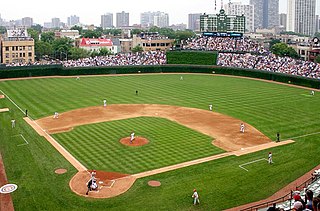 W
WWrigley Field is a stadium that opened in 1914. It has primarily served as the home field of the Chicago Cubs professional baseball club for over nine decades, but it also hosted football games and other events in its 100 years of existence.